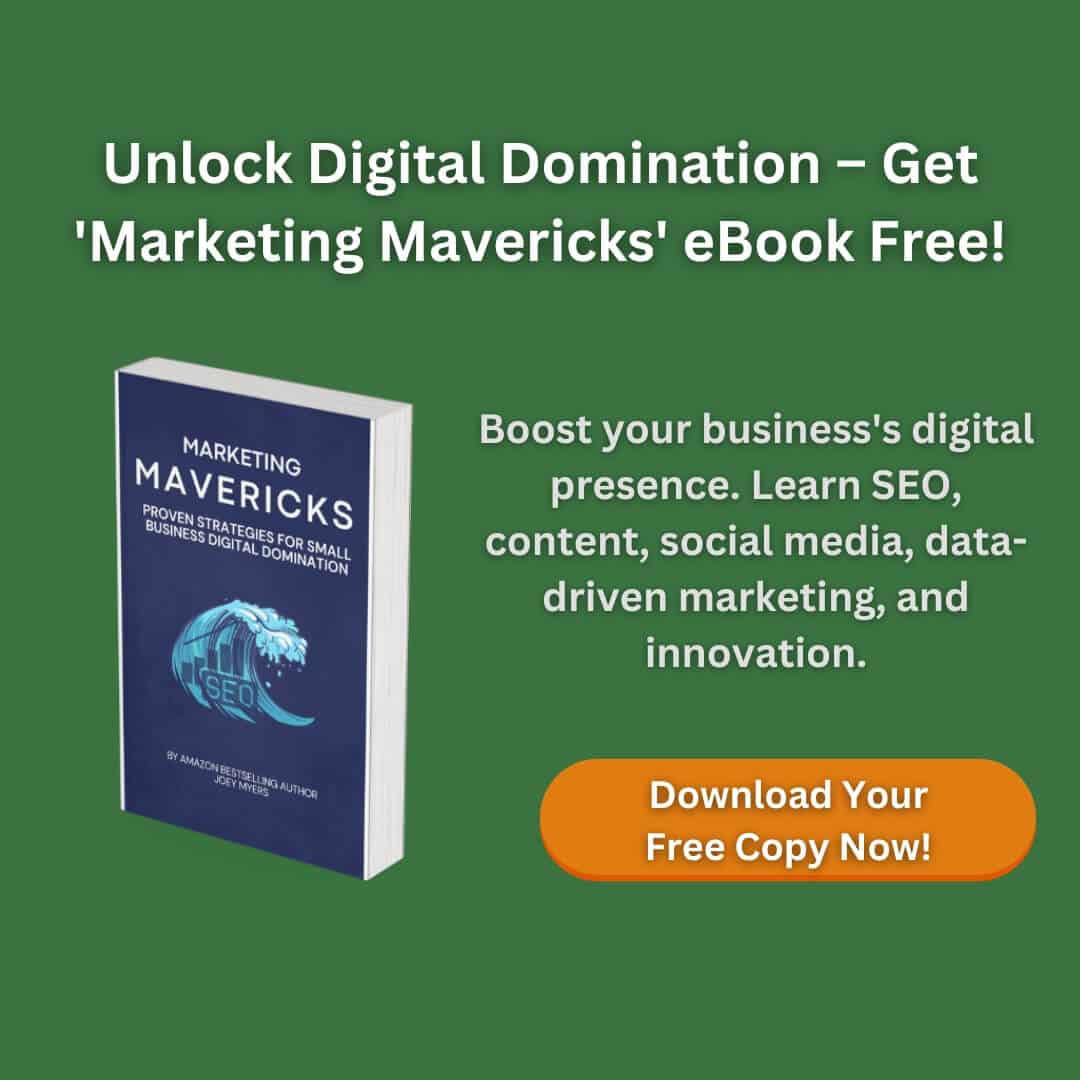The Hidden Power of Small Audiences: Boosting Conversions with Nurtured Leads
As a seasoned B2B marketer, I’ve seen how effective lead nurturing strategies change the game. Today, businesses need to do more than just generate leads. They must build strong relationships with their prospects. By making content that’s personal and valuable, you can grab their attention, gain their trust, and keep them coming back.
Remember when our team at EnFuegoMedia changed our lead nurturing plan? We were failing to turn leads into customers, and our sales team was under a lot of pressure. But then, we found out how a well-thought-out lead nurturing framework could change everything. By syncing our content, email marketing, and automation, we saw a huge jump in lead conversion and sustainable growth.

Key Takeaways
- Effective lead nurturing strategies can boost conversion rates by up to 9 times.
- Content marketing generates 3 times more leads than traditional outbound marketing.
- Personalized content can lead to higher conversion rates for B2B companies.
- Marketing automation platforms can streamline lead nurturing campaigns.
- Integrating SEO, content, and social media can reduce the need for paid ads.
In this article, I’ll share the key parts of a lead nurturing content framework for sustainable growth. We’ll cover the lead nurturing process, marketing automation tools, and more. This strategy will help you turn more leads into loyal customers.
What is Lead Nurturing?
Lead nurturing is a key marketing strategy. It’s about building strong connections with potential customers as they move through their buying journey. By sharing valuable, relevant, and personalized content, companies can help leads make up their minds and become loyal customers.
The Importance of Nurturing Leads
Lead nurturing is vital for growing a business. Top nurture campaigns get 50% more sales-ready leads at a 33% lower cost. Also, 81% of customers look up products online before buying, showing the need for a strong lead nurturing plan.
Stages of the Lead Nurturing Process
The lead nurturing process matches the B2B buyer’s journey. At first, potential buyers learn about their problems and seek more info. Then, they look at different solutions, compare them, and think about the good and bad sides. Finally, they decide on a product or service that fits their needs. After buying, they enjoy their choice and become brand advocates.
Lead nurturing helps move potential customers through the sales funnel, making them more likely to buy. Good lead nurturing uses many marketing ways, like SEO, paid search, content marketing, email, and social media, to connect with leads and build lasting relationships.
| Lead Nurturing Channels | Benefits |
|---|---|
| Organic Search (SEO) | More than 50% of industry experts say organic search (SEO) is the top channel for getting leads. |
| Paid Search | Paid search gets your business in front of people who are actively looking for what you offer. |
| Content Marketing | Content marketing shares valuable info with people at different stages and in various formats, like blogs, podcasts, and social media posts. |
| Email Marketing | Email lets you send personalized messages to different groups based on their interests or actions, guiding them through the sales process. |
| Social Media Marketing | Social media makes brands more human by letting people interact, share, and see the brand’s true self. |
Using these strategies, businesses can guide potential customers through the sales funnel and boost their chances of becoming loyal customers.
“Lead nurturing is a strategic marketing process that involves cultivating relationships with potential customers throughout their buyer’s journey.”
Research and Identify Your Target Audience
Knowing who your ideal customers are is key to a good lead nurturing strategy. It’s important to understand their pain points and needs. This helps make sure your efforts are right on target.
By doing this research, you can make content that really speaks to your audience. You’ll know the best channels to use and how to engage with them effectively.
Creating Buyer Personas and Ideal Customer Profiles
To make buyer personas and ICPs, you need to dig deep into your audience. Find out about their age, interests, and what they struggle with. Knowing how they make decisions can help you craft the right content at each stage of their journey.
Use tools like market research, customer interviews, and website analytics to get these insights. This way, you can make sure your messages and offers hit the mark with your audience.
| Buyer Persona Elements | Ideal Customer Profile Elements |
|---|---|
|
|
With thorough research, you can create buyer personas and ICPs that help you deliver content that matters. This strategy can boost your ROI and conversion rates. It also helps you build strong relationships with your ideal customers.
Optimize Your Website and Landing Pages
Your business website is like a digital storefront. It’s key to drive organic traffic. Use SEO strategies to make your site and landing pages better. This will help you get more traffic and leads who are likely to buy.
Many businesses use A/B testing and heatmaps to make their landing pages better. Adding stories to landing pages can also increase conversions by tapping into our love for stories. It’s important to have a website that works well on mobile devices, since many people shop online using their phones.
Adding FAQs to landing pages helps answer customer questions and keeps people from leaving. It’s also key to be clear and concise on landing pages to share what makes your product special.
Make sure your landing page CTAs are easy to see with big fonts and different colors. Having one clear CTA helps visitors know what to do next, thanks to the “squint test”.
Using video testimonials on landing pages can make users more engaged and trust your brand more. Also, using relevant images and bold headlines helps share what your business offers clearly.
Companies that focus on lead generation websites get 50% more quality leads. These sites can bring in 133% more revenue than those without. Good CTAs can boost conversions by 121%, and a well-designed website can increase conversions by 200%.
Inbound marketing, which includes lead generation websites, costs 61% less per lead than outbound marketing. Most users think easy navigation is the most important website feature. Pages that load fast, in under 2 seconds, convert 9% better than slower ones.
Clear value propositions can increase conversion rates by 66%. Personalized CTAs work 202% better than basic ones. Forms with fewer fields get the best conversion rates. Also, 72% of people trust online reviews as much as personal advice.
Over half of all web traffic comes from mobile devices. Blogging regularly can bring in 55% more website visitors.

Create Valuable, Relevant, and Engaging Content
In B2B marketing, content is key. But it’s not just about making content. It must be valuable, relevant, and engaging to grab your audience’s attention and help them move through the buyer’s journey. Small businesses see lead nurturing as crucial for success. It shortens the sales cycle and boosts marketing ROI.
Content Types for Lead Nurturing
For lead nurturing, a mix of content types is vital. Include blogs, white papers, landing pages, videos, ebooks, and case studies. These should meet your audience’s needs and guide them through their buying journey. Email marketing is a top way for SMBs to stay in touch with leads and keep their brand in mind for future buys.
Tailoring Content for the Buyer’s Journey
Creating content for each stage of the buyer’s journey is key. At the start, offer educational content that introduces your brand and shares industry insights. As prospects consider their options, dive deeper into your offerings, showing their unique benefits. In the final stage, address any doubts and guide them to a purchase. Nurtured leads tend to buy more than those not nurtured, showing the power of tailored content.
Lead nurturing builds trust and loyalty, leading to better customer retention. Top lead nurturers see 50% more sales at a 33% lower cost.
“Focusing too much on the sale can turn people off. Instead, focus on adding value and building a relationship.”
To make your lead nurturing content strategy work, track important metrics like engagement, conversion rates, and customer lifetime value. This approach helps you see what’s effective and what needs work. You can then tweak your content and strategies for better results.
Develop Tailored Email Marketing Campaigns
Email marketing is a strong tool for nurturing leads. It lets businesses connect with prospects through personalized messages and campaigns. By building an email list and sending timely messages that solve your audience’s problems, you can boost lead conversion.
Personalized Email Campaigns
Personalized email campaigns are key to effective lead nurturing. By segmenting your email list and making content that speaks to each buyer persona, you can greatly improve your email marketing results. In fact, the best email marketing strategies include segmentation (78%), personalization (72%), and automated email sequences (71%).
Personalized emails boost engagement and lead to higher conversion rates. Half of consumers buy from marketing emails every month. Also, nurtured leads spend 47% more than those not nurtured. For example, abandoned cart emails have a tripled conversion rate compared to other automated emails.
Follow-up Email Sequences
Follow-up email sequences are vital for keeping leads engaged throughout the sales funnel. These touchpoints keep your brand in front of prospects and help them decide to buy. A simple reminder email can increase user activation by 15%. Lead nurturing emails are also great at driving conversions.
A well-designed lead nurture email campaign sends targeted emails over time. It provides valuable content that meets the specific needs and pain points of leads. Focusing on one topic per email is better than packing multiple ideas into one. Emails should be between 50 and 125 words to keep readers interested.
By using personalized email campaigns and follow-up sequences, businesses can effectively nurture leads and guide them to a purchase. This approach helps drive sustainable business growth.
| Metric | Impact |
|---|---|
| Leads that go through nurture email campaigns | 50% more sales-ready compared to those that don’t participate |
| Businesses using marketing automation in nurturing campaigns | 451% increase in qualified leads |
| Nurture email campaigns | Can reduce customer churn by fostering loyalty and trust |
Engage with Your Target Audience on Social Media
Social media is key in today’s world for lead nurturing and audience engagement. Find out where your target audience hangs out online. This helps you make a plan to connect with potential customers and grow your brand awareness.
Sharing useful content, answering questions, and making real connections on social media makes your brand look trustworthy and quick to respond. This can make leads turn into customers. In fact, 51% of brands focusing on social selling often hit their sales goals, and 55% of consumers discover new brands through social media.
Knowing your audience is crucial in social media marketing. See where they hang out online, like on Facebook or LinkedIn. This helps you make content and engage with them in ways they like. For instance, Facebook has over 2.96 billion users every month, making it great for B2C lead generation. On the other hand, LinkedIn is a favorite for 89% of B2B marketers for finding leads, bringing in more than twice the leads than other platforms.
Creating and sharing content that meets different stages of the buying cycle helps nurture your leads on social media. Also, talking to your audience, especially those interested in your brand, boosts your lead nurturing efforts. 69% of people say talking to a brand on social media builds trust, which can lead to more sales.
Using social media in your lead nurturing strategy is a great way to connect with your audience, build relationships, and grow your business. By using the insights and data-driven methods talked about, you can make a strong social media marketing plan that helps your lead nurturing goals.

Leverage Marketing Automation Tools
In the B2B lead nurturing world, marketing automation is a big deal. These tools save time and resources, making the lead nurturing process smoother from start to finish. By using marketing automation, businesses can score leads, automate repetitive tasks, personalize messages, and send targeted content to their audience.
Lead Scoring and Nurturing Automation
Marketing automation lets you score leads by tracking their engagement and actions. This helps spot the best prospects, so sales teams can focus on them. Automated lead nurturing workflows send tailored messages to guide leads through the sales funnel, making them more likely to convert.
These tools also offer analytics to track important metrics like open rates and conversion rates. This helps businesses improve their campaigns based on data.
Automation is key to personalization and targeting. By using the data from these tools, businesses can make dynamic content that meets the needs of their audience. This approach boosts engagement and conversion rates by sending relevant information to leads.
For email marketing, automation makes nurturing leads easier. Automated email campaigns can start when certain actions happen, ensuring consistent and personalized messages to many people at once. This saves time and builds trust, helping leads move through the buyer’s journey.
In short, marketing automation changes how businesses handle lead nurturing. By using these technologies, companies can boost their Customer Relationship Management (CRM) efforts, better qualify leads, and grow sustainably.
Effective Lead Nurturing Strategies
Using Account-Based Marketing (ABM) can change the game in lead nurturing. ABM targets high-quality leads with personalized campaigns. This way, your marketing and sales teams focus on leads most likely to become customers.
Personalization is key to engaging buyers and nurturing leads. Create content and offers tailored for qualified leads. This makes them feel heard and understood.
Account-Based Marketing (ABM)
ABM is a strategy that aligns sales and marketing to target specific high-value accounts. By focusing on a few key accounts, you can make campaigns that meet each prospect’s unique needs. This approach is very effective, with nurtured leads making 47% more purchases than those not nurtured.
Personalized Content and Offers
To grab your prospects’ attention, offer content and deals that match their needs and interests. Use what you know about your leads to send messages that hit home. This personal touch builds trust and boosts engagement.
| Personalization Tactic | Benefit |
|---|---|
| Customized email subject lines | Increased open rates and engagement |
| Personalized product recommendations | Higher conversion rates and average order value |
| Tailored landing pages | Improved lead capture and qualification |
With these lead nurturing strategies, you can build strong relationships with prospects. This leads to more qualified leads and sustainable business growth.
Track and Analyze Key Metrics
To make your B2B lead nurturing strategy better, it’s key to track and analyze important metrics. These metrics include the lead conversion rate, cost per lead, click-through rate, and customer acquisition cost. These KPIs help you see how well you’re doing, which tactics work best, and where you need to get better.
Conversion Rate Optimization (CRO)
Keeping an eye on your conversion rate lets you make smart choices for your lead nurturing. Use tools like Google Analytics to track website traffic and conversion rates, see where leads come from, and check how landing pages do. Also, try A/B testing to find the best lead generation strategies.
Looking at lead quality, the lead-to-opportunity ratio, and how long leads take to move through the sales funnel gives you useful insights. With this info, you can tweak your nurturing process to be more efficient and effective.
| Metric | Description | Importance |
|---|---|---|
| Conversion Rate | The percentage of visitors who become leads or customers | Measures the effectiveness of your lead nurturing strategies |
| Cost per Lead (CPL) | The average expense of acquiring a single lead | Helps optimize marketing budget and ROI |
| Lead Quality | The likelihood of converting leads into customers | Identifies high-value leads for targeted nurturing |
| Lead-to-Opportunity Ratio | The effectiveness of lead nurturing strategies | Provides insights into the sales pipeline |
| Sales Cycle Length | The time taken for leads to move through the sales funnel | Helps identify bottlenecks for optimization |
| Return on Investment (ROI) | The value generated compared to the costs incurred | Measures the overall success of the lead nurturing program |
By tracking and analyzing these lead nurturing metrics, you can make smart, data-driven choices to boost your conversion rate optimization (CRO) strategy. This will improve your lead nurturing program’s performance and ROI.
Lead Segmentation and Behavioral Automation
Effective lead management is key to growing a business for the long term. Using Lead Segmentation and Behavioral Automation, marketers can make the customer journey smoother. They can send Personalized Communication that hits the mark, helping manage the customer lifecycle.
Lead segmentation puts contacts into groups based on things like age, company size, or how they act. This way, marketers can make content and campaigns that really speak to each group. It boosts the chance of turning leads into customers.
Behavioral automation mixes marketing tools with how people make choices. By knowing what drives buyers, marketers can make a better experience for customers. This helps shape marketing to get people to buy more.
Big names like L’Oréal, Coca-Cola, and Johnson & Johnson use Lead Segmentation and Behavioral Automation to boost their marketing. They see more people getting involved, fewer customers leaving, and more sales.
These strategies work for any business size. By really getting to know your customers and giving them what they want, you’ll grow your business in a lasting way.
“Segmentation is the foundation of personalized marketing. It allows you to create content and campaigns that truly resonate with your target audience, leading to higher engagement and conversion rates.”
Retargeting Ads on Google and Social Platforms
Retargeting is a key marketing strategy that boosts your lead nurturing and customer engagement. By retargeting ads on Google and social media, you can reach people who have shown interest in your business. This keeps you in their minds and helps move them closer to making a purchase.
Geofencing targets people by location and other traits like interests or actions. Mobile ads are big, making up 63% of site visits in the U.S.. YouTube’s bumper ads are short videos perfect for mobile viewers.
Social media lets you target specific groups for better engagement. Google AdWords reaches people actively searching for certain keywords.
Snapchat’s geofilters and LinkedIn’s detailed targeting help you connect with specific audiences. Reddit lets you tap into communities passionate about certain topics.
Good lead nurturing means watching and improving your ads for better results. Track things like views, likes, and website conversions to see what works.
| Platform | Retargeting Features |
|---|---|
| Google Ads |
|
| Social Media |
|
Using retargeting ads on Google and social media can greatly improve your lead nurturing and business growth. Keep an eye on your campaigns, refine your targeting, and offer valuable content to engage your audience.
“Retargeting is a game-changer for lead nurturing. It allows you to stay top-of-mind and guide potential customers through the sales journey.” – [Source: Marketing Expert, XYZ Agency]
Conclusion
In today’s competitive business world, lead nurturing strategies are key. Lead nurturing is vital for moving businesses forward. It helps build relationships, grow customers, and boost sustainable business growth.
Good lead nurturing can lead to more sales, loyal customers, and more money. It makes the sales process faster and aligns sales and marketing. Also, it makes things more efficient by using resources better and improving returns on investment.
As businesses change, using content frameworks and customer acquisition strategies is important. By blending lead nurturing with marketing and sales, companies can connect better with their audience. This leads to personalized experiences that help in long-term success and sustainable business growth.,,





